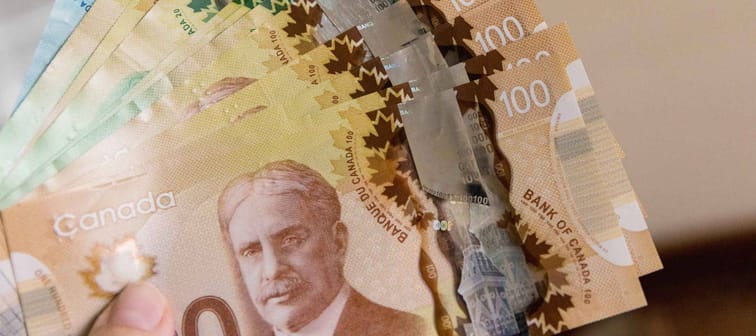But there’s reason to suspect that the TFSAs popularity is growing at the expense of the RRSP, and if that’s true, it should lead many Canadians to rethink how they plan to invest for retirement.
A tale of two savings vehicles

Before 2009, the most popular savings account Canadians had at their disposal was the RRSP.
RRSP contributions aren’t taxable, which incentivizes people to top up the accounts every year: The more money you put into your RRSP, the less tax you’ll pay.
When Canadians who have RRSPs stop working, they generally convert their RRSP balance to a Registered Retirement Income Fund (RRIF), which they then draw from to cover expenses (the RRIF conversion must occur by age 71).
Those withdrawals are considered income and taxed accordingly. The idea, though, is that you’ll probably be in a lower tax bracket in retirement than you were during your career, meaning you’ll get to keep more of the money than you otherwise would have.
And, crucially, if you withdraw from your RRSP before you retire, you’ll have to pay a withholding-tax penalty, save for certain exempt scenarios.
Then along came the TFSA, the 180-degree opposite of the RRSP: Contributions were taxable, but the growth on the balance wasn’t.
Nor were pre-retirement TFSA withdrawals discouraged by penalty: Need to pay for that basement renovation project you’d been planning for a few years? Just hit the bank and withdraw.
You can see how such an account — which could be drawn upon like any bank account and which sheltered capital gains — would become popular.
And so it went. Just eight years after TFSAs came on the scene, their aggregate value rocketed to match 20% of RRSPs, Registered Retirement Income Funds (RRIFs) and Locked-In Retirement Accounts (LIRAs).
In 2018 alone, $66 billion in total contributions were made to TFSAs and the fair-market value of all investments in TFSAs had already hit nearly $300 billion, according to the Canada Revenue Agency.
The TFSA has increased in virtually every significant CRA-tracked category in every year of its existence except 2016: total dollar value of contributions, number of contributions, the average number of TFSA contributions per person and the average annual TFSA contribution per person.
Empower your investments with Qtrade
Discover Qtrade's award-winning platform and take control of your financial future. With user-friendly tools, expert insights, and low fees, investing has never been easier.
Start Trading TodayUnintended consequences?

But this is not necessarily cause for celebration, says Jonathan Farrar, an associate professor in the Department of Accounting at Wilfrid Laurier University.
“RRSP contributions are trending downward, and that’s a little bit disconcerting,” Farrar says.
About four out of 10 dollars’ worth of TFSA contributions since 2009 (net of withdrawals) might have been at the expense of unmade RRSP contributions, notes the Canadian Tax Journal.
And while overall RRSP contributions rose by 1.8% in 2019, according to Statistics Canada, about 92,000 less Canadians contributed to RRSPs than the year before, a drop of 1.5%.
In fact, the number of Canadians contributing to RRSPs decreased three years in a row from 2010 to 2012, and again in 2016 and 2019.
And there the problem may lie: If the decreasing numbers of Canadians contribute to RRSPs, that could eventually mean less money going into RRSPs — and that could mean a squeeze.
‘Play money’

According to BMO, Canadians believe they will need around $1.5 million saved by the time they retire.
In order to do that — assuming you start saving at 30 years of age — one would have to save about $13,800 dollars a year for 32 years, assuming your savings achieved 7% of annual compound interest.
But people are not necessarily treating TFSAs as long-term savings accounts.
“We’re seeing that … a lot of people are not using it for retirement,” Farrar says. “People are using the TFSA as a bank account instead of an investment account, from which you make a very rare withdrawal.”
Canadians hit their TFSAs for cash an average of five times in 2019, for an average of $7,689, according to the CRA.
Both of these figures have also increased in nine of the account’s 10 years for which we have statistics.
Farrar says the government is also beginning to more heavily scrutinize individuals who are using TFSA accounts to their high-frequency security trading — daytraders, basically.
Part of the genius of the RRSP is how it disincentivizes people from taking money out before retirement. The TFSA lacks that aspect.
“People might be willing to take more risks in their investments in a TFSA, and that could be because it’s perhaps viewed as play money,” said Farrar. “That’s really not the intention of the TFSA.”
Unexpected vet bills don’t have to break the bank
Life with pets is unpredictable, but there are ways to prepare for the unexpected.
Fetch Insurance offers coverage for treatment of accidents, illnesses, prescriptions drugs, emergency care and more.
Plus, their optional wellness plan covers things like routine vet trips, grooming and training costs, if you want to give your pet the all-star treatment while you protect your bank account.
Get A QuotePossible shortfall

Should RRSP contributions continue to dwindle, people’s reliance on public pensions would increase, said Farrar.
“If people have less to withdraw from in retirement, then social pensions like CPP and OAS are going to become a lot more important,” he said. “And that’s not such a great thing because now there’s a greater reliance on the public purse rather than people having privately funded retirement funds.”
One possible solution is a third potential savings account: the Tax-Free Pension Account (TFPA), which the government is exploring.
This account, which would likely take a decade before it comes into existence, would be taxed like a TFSA. But as with an RRSP, you wouldn’t be able to tap into it until you’re 60.
Farrar says that the lifetime cap would likely be somewhere around $250,000
Such an account could potentially keep more of Canadians’ retirement savings where it belongs: in retirement accounts, where it can grow through compound interest for decades.
It could also alleviate some worries about future fiscal shortfalls that the Treasury Board might be having.
The importance of saving

Canadians are potentially putting away less for retirement than ever before and that’s a problem.
And while the TFPA would fill a valuable gap as a retirement savings vehicle for Canadians, it would still require individuals to take the initiative and make retirement saving a priority.
As the accounting professor Farrar reminds us, Canadians should ideally contribute to both TFSAs and RRSPs as much as possible in order to plan for a comfortable retirement.
There’s no better time than now to start, even if it’s just a few hundred dollars.
Trade Smarter, Today
Build your own investment portfolio with the CIBC Investor's Edge online and mobile trading platform and enjoy low commissions. Get 100 free trades and $200 or more cash back until March 31, 2025.








